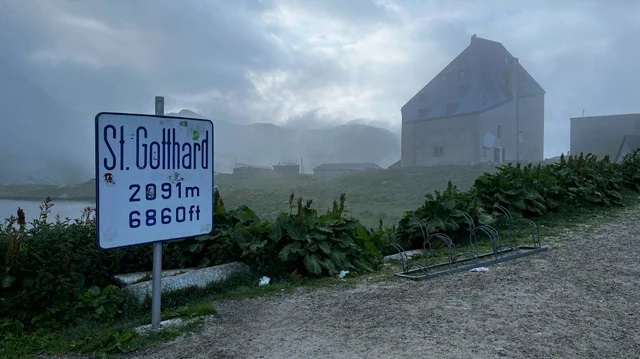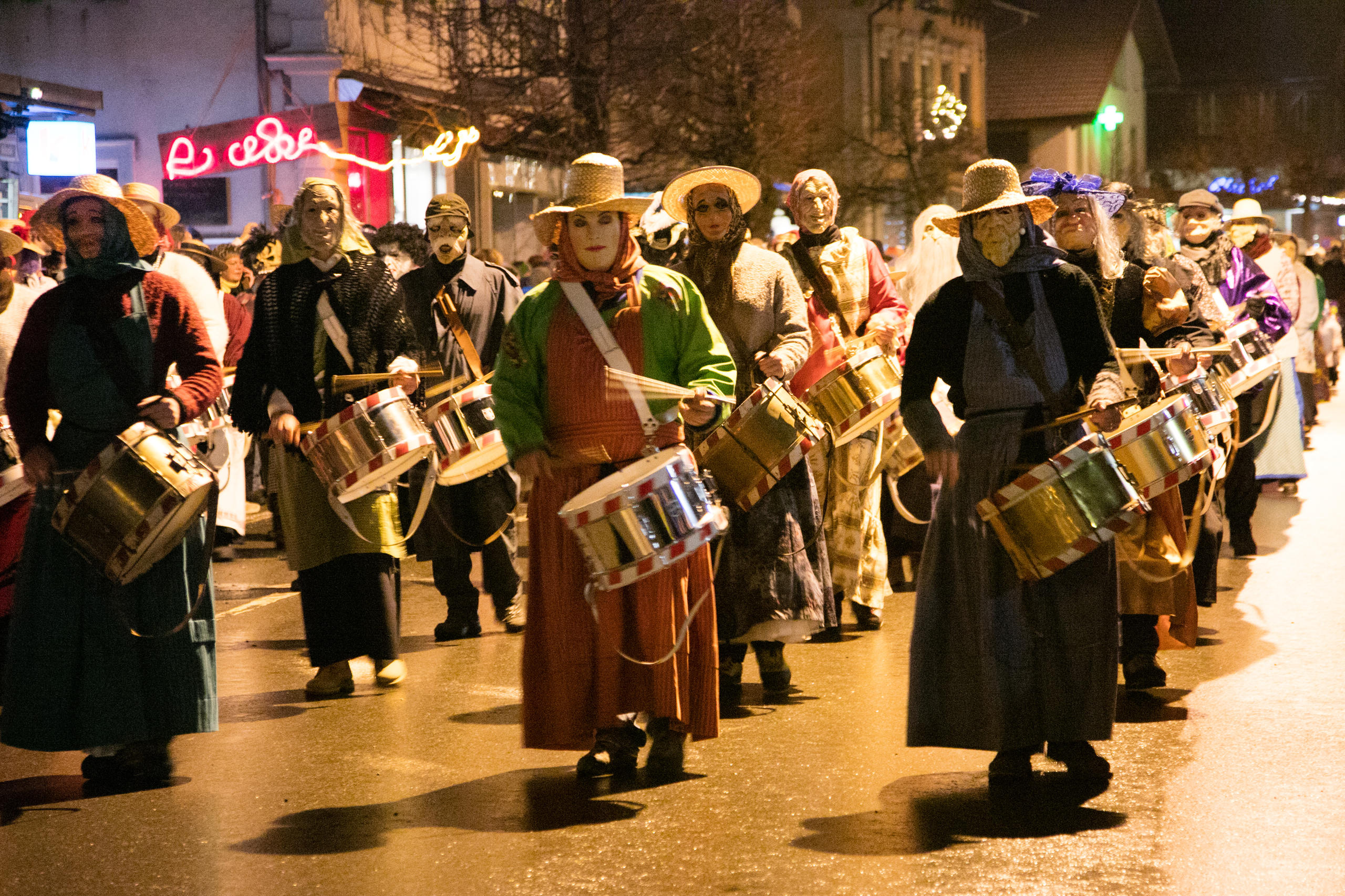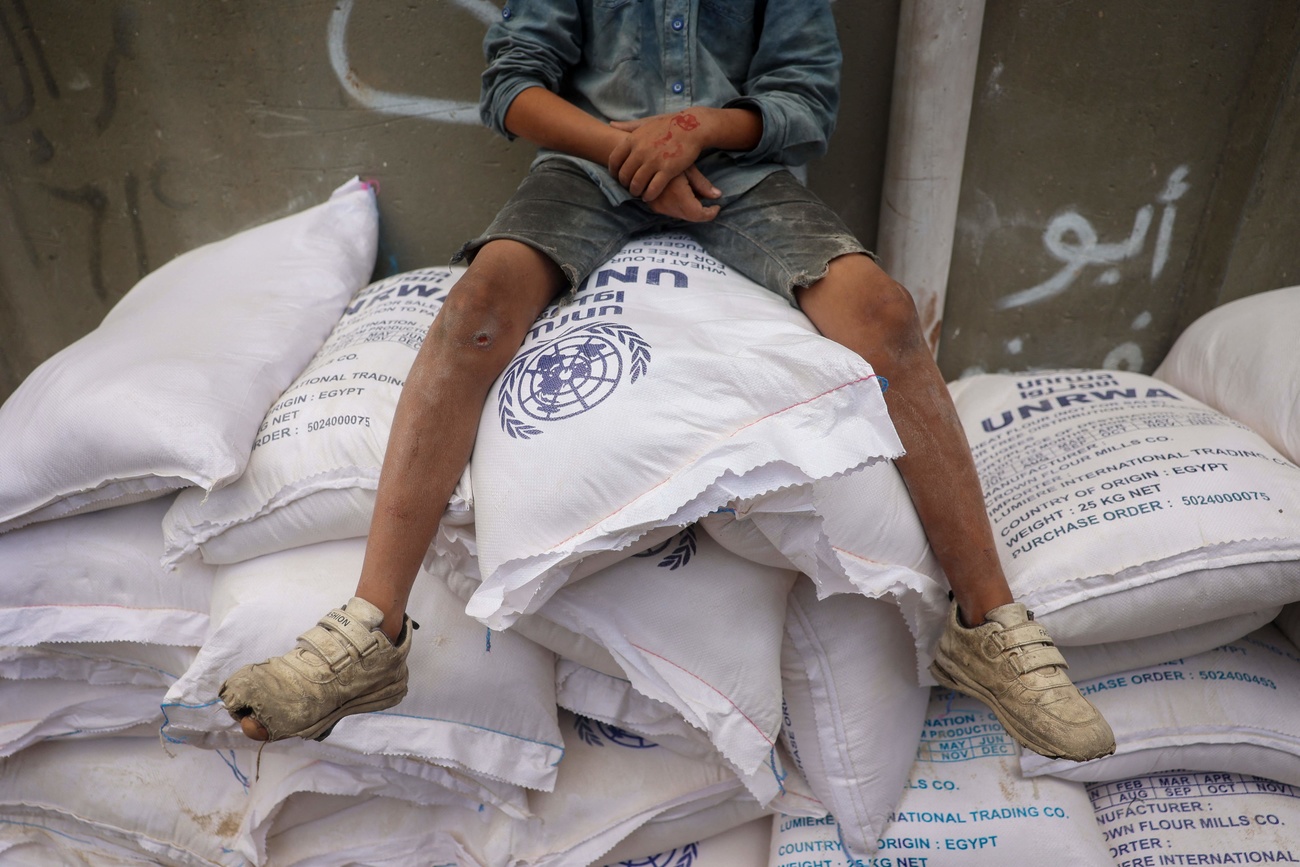Five Swiss languages – one song
German, Italian, French, Romansh, Spanish. Music created to overcome language barriers.
The mountain scape surrounding the famous Gotthard Pass road is hidden behind fog. The white wispy clouds restrict visibility and leave a certain lack of orientation. Only the wind can be heard. But suddenly the sky opens up giving way to a gorgeous view.
Five musicians were inspired by this view. “From a symbolic point of view, we broke through the fog and got in touch with the other parts of Switzerland,” says Marc Aymon from the French-speaking region of Switzerland. The five have never met before, let alone worked together.
They all come from different regions of Switzerland, speak different languages but they all have one big goal: to compose a multilingual song together within five days.
These five musicians represent the languages
As part of the “Chantez-vous Suisse” (Sing Switzerland) project, the Swiss public radio, RTS, the following musicians have taken on the challenge: Christoph Trummer from German-speaking Switzerland, Chiara Dubey for Italian-speaking Switzerland, Marc Aymon is from French-speaking Switzerland, Mattiu Defuns from the Graubünden and the Basel native La Nefera represents the immigrant languages of Switzerland with her native language Spanish.
The five are at home in different genres – from hip-hop, to modern classic and they sing or rap in their native language.
How did the joint song come about?
This is what came out of the attempt to bring the language regions closer together on the Gotthard mountainside, through the language of music.
PLACEHOLDER“Plötzli chumi usem Nebel”, “je vais sortir de la brume”, “sevesin sur la nebla”, “salgo de la niebla”, “la nebbia”, in English, “suddenly I emerge from the fog” is sung in the five in different languages.
“The fog has spread across the Gotthard Pass inspired us”, says Mattiu. “Up here we could hardly see our own hands in front of our eyes. Then suddenly the fog lifted and an unknown landscape opened up to us. For us, this experience was the image that we wanted to incorporate into our song,” says Trummer.

The song is about coming out of the fog and meeting each other. About exchanging ideas and getting to know each other better. “Everyone wrote their own verse and described in it how they can let go of the fears and prejudices they might have had before this week together,” says Trummer.
Making music can start out very unharmoniously. In the beginning there was just a blank whiteboard on the wall. Then ideas were collected. “In the beginning we talked a lot. We wanted to get to know each other and develop a feeling for each other,” says Mattiu.
A colorful mix of Swiss languages
The fact that everyone speaks a different language was not a major obstacle. “I caught myself mixing three languages in one sentence,” says Chiara Dubey. However, German and French in particular have prevailed as the language of communication.
- German: is a main language for 62% of the Swiss population.
- Although not an official national language, 23.1% speak English, Portuguese and Albanian as their native language.
- French follows in second place among the Swiss national languages (22.8%).
- 7.9% of the population speak Italian as their primary language.
- Romansh is a main language for 36,000 people. This corresponds to 0.5% of the population.
More than two thirds (68%) of the population in Switzerland use more than one language at least once a week when communicating with their relatives, at work or when consuming media in their free time.
They rarely switched to English, especially when things had to be done quickly. “I fit the stereotype,” says Marc Aymon from the French-speaking Swiss region. Of the national languages, he only knew French.
Mattiu, on the other hand, hardly speaks French. But the common language is the language of music. “As soon as I pluck my guitar, I find a language that everyone understands.” Chiara Dubey liked the colorful mix of languages. “Mescoliamo un po tutte le lingue – we mix languages and also communicate through the language of music,” she says.
The resulting song is also a colorful mix. The joint work combines their musical styles. Marc Aymon, Mattiu and Trummer contribute their guitar sound, Chiara plays the violin and La Nefera raps. It was important to the five that everyone could contribute their styles. Mattiu describes it as, “a musical bouquet of flowers is created.”
That it would harmonize so well – both musically and personally – was not clear from the beginning.
It’s a challenging project and time is limited, says Marc Aymon from the French-speaking region of Switzerland: “I didn’t know if it would work out. I found that exciting and therefore wanted to take part.” For Marc, a wish has also come true. For a long time he had dreamed of singing in Romansh.
PLACEHOLDERThe interregional exchange was successful for the musicians linguistically, musically and personally. “You have to get to know people to underestand who they are. This is our point of departure,” says La Nefera.
Five people met here who connected through music – even beyond language barriers.
Swiss musical heritage interpreted in multiple languages
In addition to the new multilingual song that the five composed together, they all brought a song from their language region that they believe is of particular importance. These songs were also reinterpreted in several languages.
Trummer opted for “Rosmarie und I” by Polo Hofer. The song tells a story of a young couple who hitchhike to Paris and on to Spain in the early 1970s, but then have to return to everyday life.
He observes this wanderlust in many German-speaking Swiss. At the same time, however, also the reluctance and perhaps sometimes the lack of courage to do it after all and set off.
An originally Italian-language song also exists in several languages after this week. Chiara Dubey brought the song “Voglio Volare” with her. It’s not a typical Ticino song about enjoying life and drinking a glass of wine.
It is a song that commemorates a tragic event. In 1938, five Ticino pilots flew from Dübendorf back to Lugano in Ticino. However, a major storm over the Alps surprised them. They hit a mountain, fell and died.
Chiara Dubey chose this song because the story of the flight over the Alps back home represents a certain Ticino attitude to life for her. “Many have the feeling that they have to leave Ticino to achieve something beyond the Alps,” says Dubey. She herself emigrated to Zurich ten years ago, but always likes to return to her homeland.
Mattiu brought the choral song «La sera sper il lag» by the Romansch composer Gion Balzer Casanova, from the French-speaking part of Switzerland the old song «La Délaissée» , which Marc Aymon chose, was interpreted in several languages and La Nefera chose “Babylon” by Black Tiger, the first Swiss rapper from the nineties to rap in dialect.
The project “Chantez-vous Suisse?”
Five musicians spent a week together on the mountains of Gotthard Pass at the end of June 2023.
This is a pioneer project for the four Swiss public radio channels (SRF1, RTS La PremièreExternal link, Rete UnoExternal link and Radio RumantschExternal link).
Four of the participants each represented a language region of Switzerland. A fifth person represented people in Switzerland with a migration background. The common goal was to compose a new song in four or five languages that embodied Switzerland’s multilingualism.
The aim of the project was to provide a cultural and musical insight into the respective language regions and to convey their similarities and differences.
Here you can view the original article which contains all the songs and programming. External link

In compliance with the JTI standards
More: SWI swissinfo.ch certified by the Journalism Trust Initiative








You can find an overview of ongoing debates with our journalists here . Please join us!
If you want to start a conversation about a topic raised in this article or want to report factual errors, email us at english@swissinfo.ch.